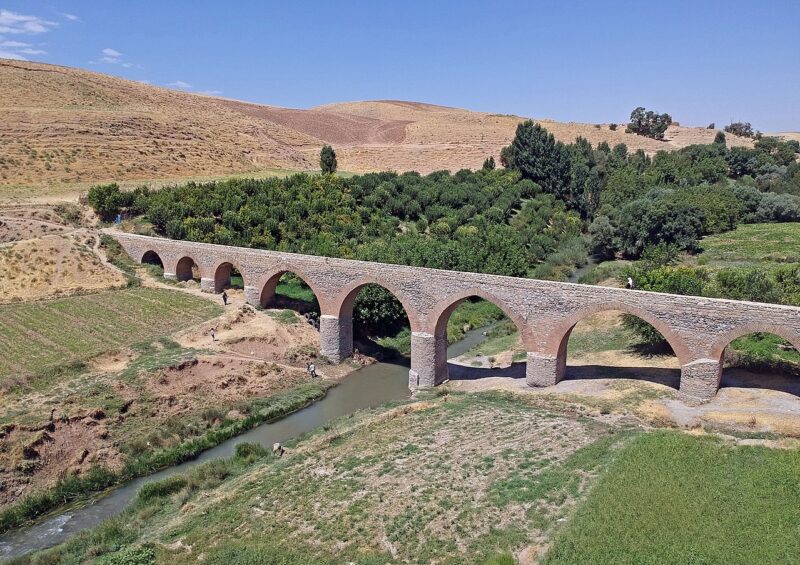Hatem Qala Bridge: A masterpiece of Qajar architecture
Hatem Castle Bridge, which is also known as Haji Mohammad Jafar Khan Bridge, is actually a dam built during the Qajar period on the Caesar River in the northwest of Borujard city. In addition to providing agricultural water, this bridge-dam has played an important role in the economic prosperity of the region due to its location on the Silk Road.
unique features:
The 200-meter length and 2.3-meter width of the bridge has made it one of the largest bridge-dams of the Qajar period.
The 21 spans of the bridge with cross and semicircular arches, together with the precise and delicate water supply system, display a masterpiece of Iranian engineering and architecture.
The materials used in the construction of the bridge, including brick, stone and Saroj mortar, have guaranteed its strength and stability over many years.
The decorations of the bridge, including mosaic tiling and painting, have given it a special beauty and elegance.
Historical and cultural importance:
Hatem Castle Bridge is a clear example of bridge construction in the Qajar period and provides valuable information about the techniques and materials common in that period.
The location of this bridge on the Silk Road shows its role in commercial and cultural exchanges between Iran and other countries.
Hatem Castle Bridge has been the venue for many social and cultural events throughout history and has played a significant role in the identity and culture of the people of the region.
Tourist attractions:
Today, Hatem Castle Bridge, as one of the tourist attractions of Borujerd city, attracts many tourists every year.
The pristine nature and beautiful views around the bridge have provided a pleasant atmosphere for recreation and leisure.
Visiting Hatem Castle Bridge is an opportunity to learn about the history, culture and architecture of Iran during the Qajar period.


